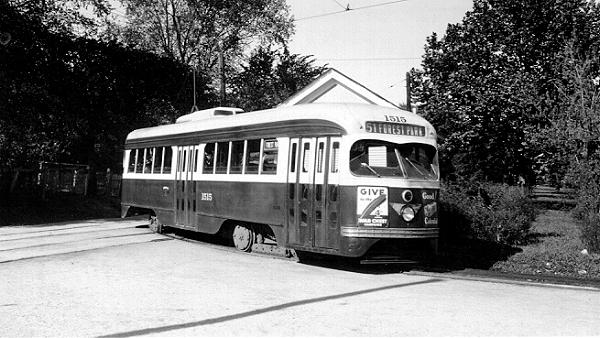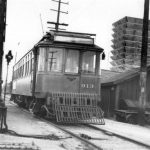PE’s Double-End / MU PCCs : The customization revolution had begun
By Ralph Cantos
From their 1936 introduction until the end of 1939, almost 900 air-electric PCCs had been built and delivered to several US cities. While St. Louis Car Co. built the majority of the cars, Pullman Standard did manage to land a few orders. Until the end of 1939, all 900 cars were nearly identical. There were some minor differences in length, one- or two-piece head signs, the deletion or addition of rear marker lights and head light wings, lift or crank windows, and so on. But by in large, the cars were all the same. Then came 1940!
In early 1940, the St. Louis Public Service took delivery of 100 “all-electric” PCCs, six years before this equipment would become almost standard equipment on post-War PCCs. There were some postwar exceptions, but all-electric operation was almost standard unless otherwise ordered by the purchasing transit system.
The St Louis Public Service 1500s (nos. 1500 to 1599) had several new features such as a deeply slanted front windshield, new “super-resilient” wheels, built-in, factory-installed rear round marker lights (as opposed to the “PEP BOYS “tear drop” truck markers), and the longer trolley base shroud with air intake.
The new unproven all-electric 1500s, as beautiful as they were, proved to be very troublesome cars. Retirement of these handsome cars came early and by 1954, they were all scrapped save for 50 cars that had been pawned off to Philadelphia Transportation Co., and there too, all were gone by 1955.
Then came PE’s revolutionary Pullman Standar-built MU-double-enders. They entered service in November of 1940. The PE PCCs were a sensation at the time. Trade publications gave the 30 cars full page coverage, like the one pictured above. I believe it is from RAILWAY AGE. Regardless, this was the beginning of “PCCs built to order.” The first 25 all-electric postwar PCCs ordered by Louisville Railways looked nothing like the hundreds of standard “off the shelf” PCCs that were to follow such as LA’s P-3s.
The service life of PE’s beautiful PCCs fell victim to the “rails to rubber” hysteria that befell this country in the 1950s and after just 15 years of splendid operation, they were out of service.

This is St. Louis Public Service car no. 1515 just after entering service in 1941. Notice the new wheels, trolley shroud, and recessed windshield, features that would become standard on postwar PCCs six years later. It was also one of the first to sport a full width anti-climber.
Ralph Cantos Collection




